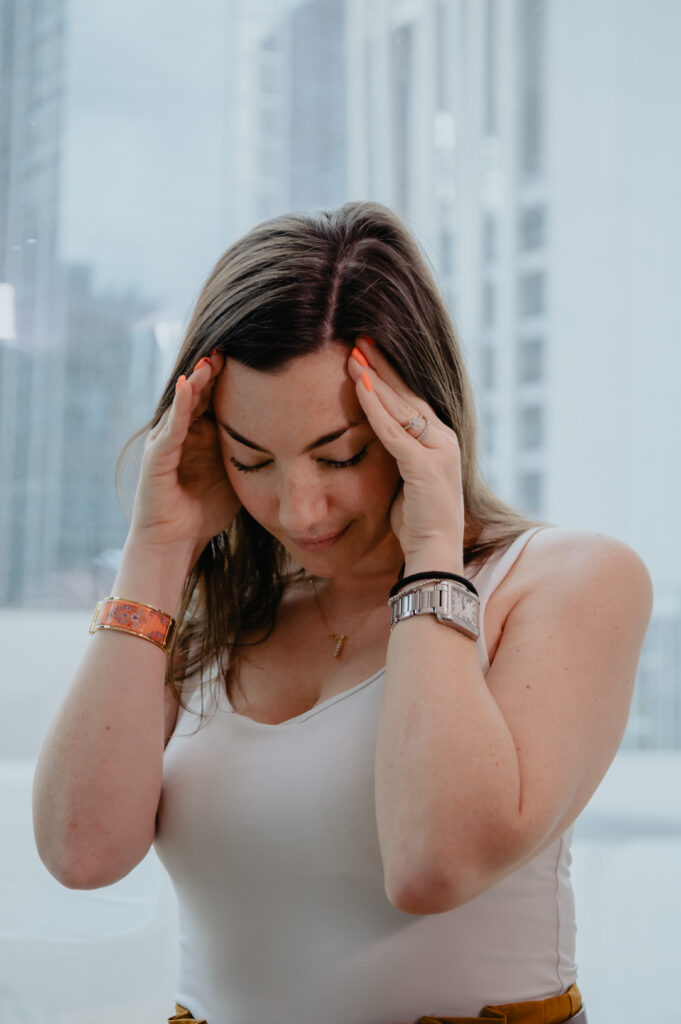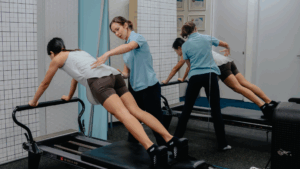Cluster headaches are like uninvited guests crashing a party; they show up suddenly, cause excruciating pain, and often leave you wondering when they’ll strike next. If you or someone you know has experienced these intense headaches, you’re not alone. In this blog post, we’ll delve into the world of cluster headaches, exploring their symptoms, triggers, management techniques, and the professional help available to tackle them head-on.
What are cluster headaches?
What exactly are cluster headaches? Cluster headaches are a type of primary headache disorder that falls under the “trigeminal autonomic cephalalgias” category. Don’t let the jargon overwhelm you; we’ll break it down.
Cluster headaches are a recurring, severe form of headache that tends to occur in “clusters” or cycles. These headache episodes can be alarmingly frequent and intense, making them one of the most painful conditions known to medical science.
What are the symptoms of cluster headaches?
Cluster headaches come with a signature set of symptoms that can leave you in no doubt about their arrival. Here’s what to watch out for:
- Severe pain: The pain is typically located around one eye and is described as excruciatingly sharp, burning, or stabbing.
- Unilateral pain: It often affects one side of the head, giving it a one-sided nature.
- Duration: Cluster headache attacks are relatively short but intense, lasting between 15 minutes to 3 hours.
- Frequency: During a cluster period, individuals may experience multiple attacks daily.
- Autonomic symptoms: These include red and teary eyes, nasal congestion, and a drooping or swollen eyelid on the affected side.
Now that we’ve got a grasp of what cluster headaches entail let’s explore what can trigger these intense episodes.
What are some possible triggers for cluster headaches?
Cluster headaches don’t just show up out of the blue; they often have identifiable triggers that kickstart an attack. Understanding these triggers can help you manage and possibly prevent them.
- Alcohol: For some individuals, alcohol, especially red wine and beer, can be a potent trigger for cluster headaches.
- Smoking: Cigarette smoke, both firsthand and secondhand, is known to be a trigger.
- Certain foods: High-risk foods include those rich in nitrates, like processed meats, and those containing histamines, like aged cheese.
- Sleep patterns: Changes in sleep patterns, such as irregular sleep or jet lag, can be a trigger.
- Seasonal changes: Cluster headaches often follow a seasonal pattern, with more attacks occurring during specific times of the year.
- Stress: While stress isn’t a direct trigger, it can exacerbate the frequency and intensity of cluster headaches.
How do we avoid cluster headaches?
Preventing cluster headaches can be a challenge, but making some lifestyle changes and avoiding known triggers can go a long way in managing this condition.
What lifestyle changes can help in managing cluster headaches?
Establish a routine: Maintaining a consistent sleep schedule and daily routine can help reduce the frequency of cluster headaches.
Monitor triggers: Keep a headache diary to identify your specific triggers, allowing you to avoid or minimise exposure.
Limit alcohol and smoking: Reducing or quitting alcohol and tobacco consumption can significantly decrease the likelihood of cluster headaches.
Stress management: Practicing relaxation techniques like deep breathing, meditation, or yoga can help manage stress, potentially reducing the frequency of attacks.

Consult a specialist: Seek professional help from a headache specialist who can tailor a personalised plan to your unique needs.
What are some effective methods for alleviating cluster headache pain?
Managing cluster headaches involves not only preventing attacks but also finding ways to alleviate the pain when an attack occurs. Here are some effective methods:
Oxygen therapy: Inhaling 100% oxygen through a mask during an attack can provide relief by narrowing blood vessels in the brain.
Medications: Your healthcare provider may prescribe medications like triptans, corticosteroids, or calcium channel blockers to reduce pain and prevent future attacks.
Invasive nerve stimulation: In some cases, procedures like occipital nerve stimulation or deep brain stimulation may be considered for severe, treatment-resistant cluster headaches.
As always, it is important to consult a healthcare specialist who can tailor a personalised plan that suit your needs.
How does physiotherapy alleviate cluster headaches?
In addition to medical interventions, physiotherapy can play a crucial role in managing cluster headaches.
- Physiotherapy can help prevent the need for frequent oxygen therapy sessions. By addressing muscle tension and posture issues, physiotherapists can reduce the overall frequency of cluster headaches, potentially decreasing the reliance on oxygen therapy.
- Physiotherapy can be a valuable addition to medication-based treatment. By teaching relaxation techniques and stress management exercises, physiotherapists can enhance the effectiveness of medications in reducing the frequency and severity of cluster headaches. Additionally, by promoting proper posture and muscle relaxation, physiotherapy may help minimise the need for pain-relief medications during attacks.
- Invasive nerve stimulation procedures like occipital nerve stimulation can be considered for severe, treatment-resistant cluster headaches. Physiotherapy can complement these procedures by preparing patients physically and mentally for the intervention. It can also help with post-procedure rehabilitation, ensuring optimal outcomes.
Incorporating physiotherapy into the overall healing plan for cluster headaches can have a synergistic effect, addressing not only the immediate pain but also the underlying contributing factors. By working in conjunction with other treatments and lifestyle modifications, working with our physiotherapists here at City Osteopathy and Physiotherapy offers a holistic approach to managing cluster headaches, improving the quality of life for individuals affected by this condition.
Conquering cluster headaches: Finding relief
In conclusion, understanding cluster headaches, their triggers, and management options is crucial for individuals who suffer from this condition. Seeking professional help from healthcare specialists and making lifestyle changes can greatly improve the quality of life for those affected by cluster headaches. If you’re experiencing cluster headaches, don’t hesitate to book a consultation with our experienced physiotherapists who can support you on your journey towards headache relief!
FAQs
What are the long-term implications of untreated cluster headaches?
Ignoring cluster headaches or failing to manage them properly can have significant long-term implications. These may include:
Decreased quality of life: The intense pain and frequent attacks can severely impact your daily life, making it difficult to work, socialise, or enjoy leisure activities.
Depression and anxiety: Living with the constant fear of impending attacks can lead to depression and anxiety.
Chronic pain: In some cases, cluster headaches can become chronic, causing persistent pain.
Medical complications: Untreated cluster headaches can lead to complications like ulcers, high blood pressure, or cardiovascular issues.
Given these potential consequences, seeking proper diagnosis is essential for improving your overall well-being.
What are the different types of headaches and how do cluster headaches differ from them?
There are several different types of headaches, each with its own unique characteristics and causes. Cluster headaches stand out among these types due to their distinct features. Let’s explore the various types of headaches and how cluster headaches differ from them:
- Tension headaches:
- Characteristics: Tension headaches are the most common type of headache. They are characterised by a dull, aching pain that usually wraps around the head, often described as a tight band or pressure.
- Duration: Tension headaches can last for several hours to days.
- Triggers: Stress, poor posture, and muscle tension are common triggers for tension headaches.
- Cluster headache difference: Cluster headaches differ from tension headaches in terms of pain intensity, duration, and accompanying symptoms. Cluster headaches are much more severe, last for a shorter duration, and are often accompanied by symptoms like tearing of the eye and nasal congestion.
- Migraines:
- Characteristics: Migraines are characterised by throbbing or pulsating pain, often on one side of the head. They are usually accompanied by nausea, vomiting, and sensitivity to light and sound.
- Duration: Migraines can last from a few hours to several days.
- Triggers: Migraine triggers can vary widely and may include certain foods, hormonal changes, stress, and environmental factors.
- Cluster headache difference: Cluster headaches differ from migraines in terms of pain quality, duration, and associated symptoms. Cluster headaches are shorter in duration but have a much more intense and sharp pain. They also tend to occur in clusters or cycles with multiple attacks in a day.
- Sinus headaches
- Characteristics: Sinus headaches are often associated with sinusitis or sinus infections. They cause pain and pressure in the front of the face, typically around the forehead, nose, and cheeks.
- Duration: Sinus headaches usually improve as the underlying sinus condition is treated.
- Triggers: Sinus headaches are primarily triggered by sinus infections or inflammation of the sinus passages.
- Cluster headache difference: Cluster headaches differ from sinus headaches in terms of pain location and other associated symptoms. Cluster headaches typically cause severe, one-sided pain, along with eye redness, tearing, and nasal congestion, which are not typical of sinus headaches.
- Hormone headaches:
- Characteristics: These headaches are often linked to hormonal fluctuations and commonly affect women during menstruation, pregnancy, or menopause.
- Duration: Hormone headaches may occur cyclically with hormonal changes.
- Triggers: Hormonal changes are the primary trigger for these headaches.
- Cluster headache difference: Cluster headaches are not directly linked to hormonal changes and have a different pattern of occurrence and symptoms.
- Cluster headaches:
- Characteristics: Cluster headaches are characterized by intense, stabbing or burning pain, often centered around one eye or temple. They are often described as one of the most severe types of headaches.
- Duration: Cluster headaches are relatively short-lived, with attacks lasting from 15 minutes to 3 hours.
- Triggers: Common triggers for cluster headaches include alcohol, smoking, changes in sleep patterns, and stress.
- Accompanying symptoms: Cluster headaches are often accompanied by symptoms such as tearing of the eye, redness of the eye, drooping eyelid (ptosis), and nasal congestion.
In summary, cluster headaches are distinct from other types of headaches in terms of their severity, short duration, one-sided pain, and the presence of specific accompanying symptoms. It’s important to accurately diagnose and differentiate between headache types to ensure appropriate treatment and management strategies are applied. If you experience severe or recurrent headaches, consult a healthcare professional for a proper evaluation and personalised plan.










